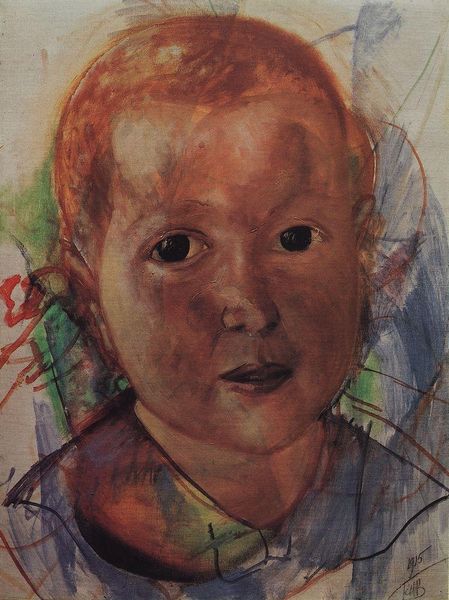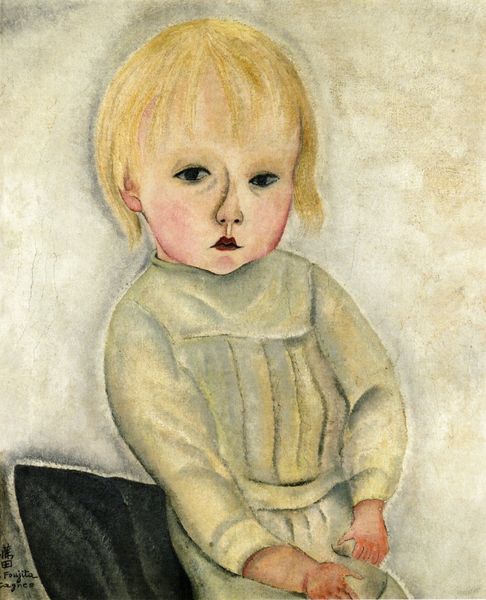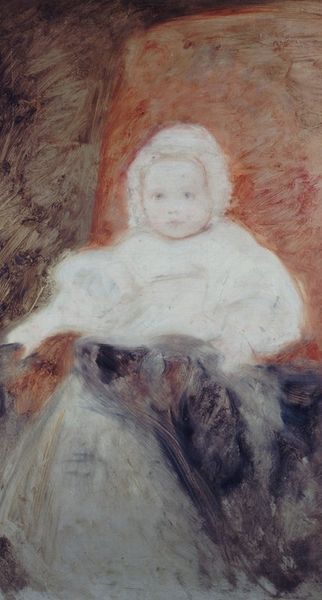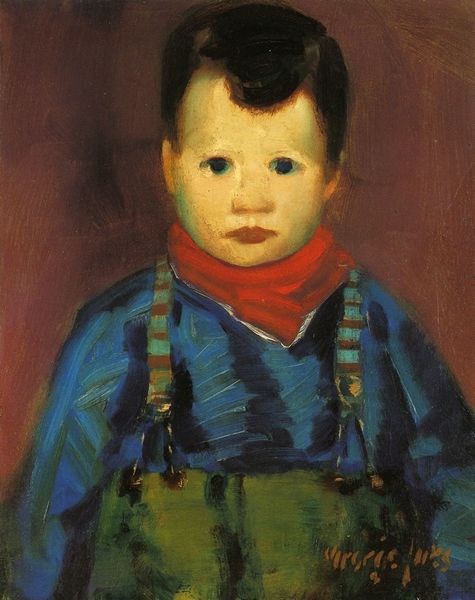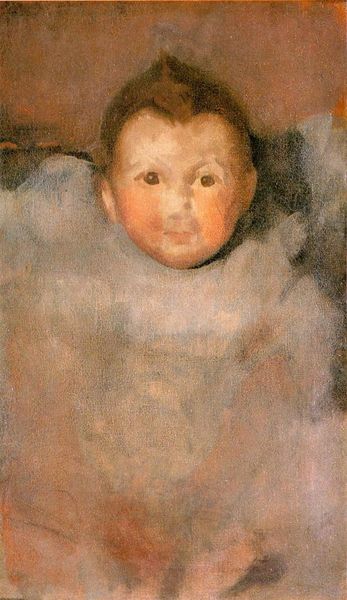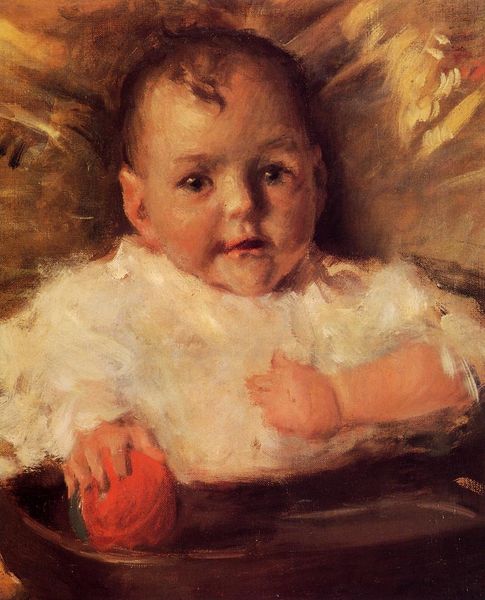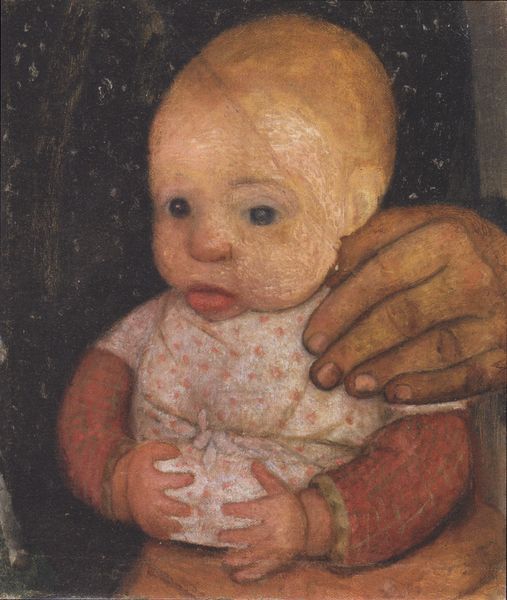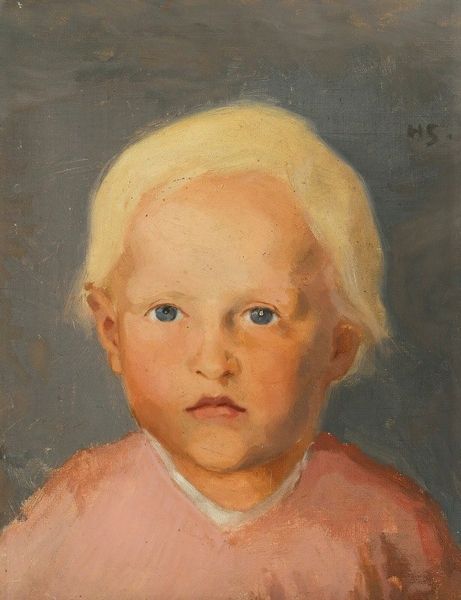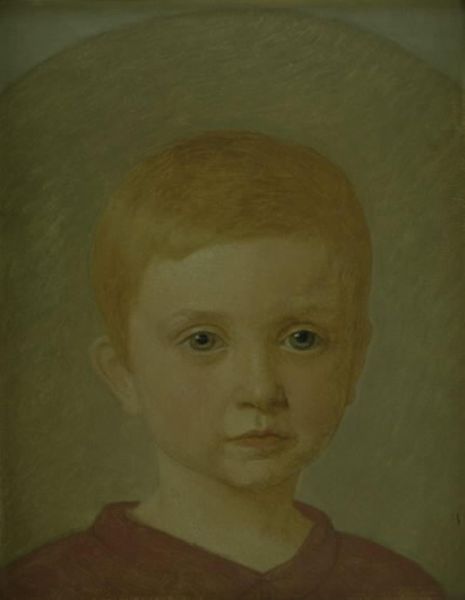
oil-paint
#
portrait
#
oil-paint
#
oil painting
#
child
#
russian-avant-garde
#
realism
Copyright: Public domain
Editor: This oil painting, "The Daughter of an Artist," was created in 1923 by Kuzma Petrov-Vodkin. The child's direct gaze is quite captivating, but also seems to convey a solemn, almost burdened feeling. What social narratives do you find within this piece? Curator: Petrov-Vodkin painted this portrait during a period of immense social and political upheaval in Russia. Looking at the context in which this portrait was made, doesn’t the child's expression seem to mirror the anxieties of that era? The painting departs from the idealised portrayals of children common at the time. It could be argued that there is almost a complete denial of that innocent stereotype that used to surround artistic representation of youth. Editor: So, it’s a conscious commentary through portraiture? Curator: Absolutely. The "Russian Avant-Garde" movement was marked by a radical departure from traditional artistic conventions. Artists like Petrov-Vodkin sought to reflect the changing social landscape, often through symbolism and a rejection of sentimentality. Given that the revolution had sought to liberate people, there may be an attempt here to depict individuals from the upcoming generations as bearing the weight of enormous cultural shift and promise. What's your perspective? Editor: That's a helpful context to consider. The subject's almost severe expression contrasts so sharply with what I expected to see. The visual elements take on so much meaning when framed through history. Curator: Exactly, and that's where art becomes such a powerful tool of social commentary. Studying works such as this is vital in understanding and critiquing artistic practices during these periods. Editor: Thanks for this enlightening discussion. It's given me so much to think about.
Comments
No comments
Be the first to comment and join the conversation on the ultimate creative platform.
